Google Ads vs Twitter Ads
November 03, 2023 | Author: Sandeep Sharma
18
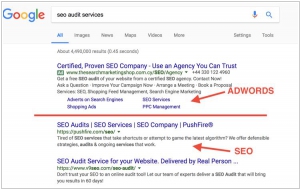
Google Ads (former Adwords) is an online advertising service that places advertising copy at the top or bottom of, or beside, the list of results Google displays for a particular search query. The choice and placement of the ads is based in part on a proprietary determination of the relevance of the search query to the advertising copy.
3
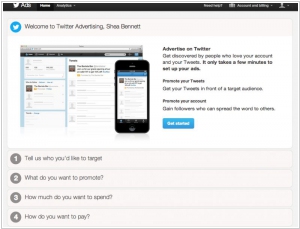
Connect with the most receptive Twitter users at the most relevant moment with our Promoted Products. Build your community of vocal and motivated brand advocates quickly by reaching the Twitter users most likely to be interested in your brand. Deliver your message to non-followers and more of your existing followers with precision thanks to a range of targeting options.
Google Ads and Twitter Ads are two popular online advertising platforms, but they differ in their scope and targeting options. Google Ads, formerly known as Google AdWords, is a comprehensive advertising platform that allows businesses to display their ads on Google's search results pages, websites within the Google Display Network, and YouTube videos. It offers a wide range of targeting options, including keywords, demographics, location, and interests, allowing advertisers to reach a highly relevant audience. Google Ads leverages the intent-based search behavior of users, making it effective for capturing users actively searching for specific products or services. On the other hand, Twitter Ads focuses on advertising within the Twitter social media platform. It enables businesses to promote their tweets, accounts, or trends to a targeted audience. Twitter Ads offers various targeting options, including demographics, interests, location, and specific keywords or hashtags. It is particularly effective for brand awareness campaigns, engaging with a specific audience, and promoting real-time events or discussions.
See also: Top 10 Online advertising services
See also: Top 10 Online advertising services
Google Ads vs Twitter Ads in our news:
2023. Twitter looks to bring advertisers back with expanded Ad features
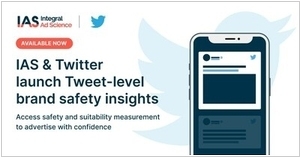
Twitter, now referred to as X, has revealed a new collaboration aimed at enhancing brand safety protocols for advertisers on the platform. This initiative follows a decline in ad revenue due to brands suspending advertising on X after their ads were displayed alongside Nazi content. In partnership with ad-tech company Integral Ad Science, X will introduce additional advertising tools designed to enable advertisers to effectively separate their content from undesirable keywords and handles, boasting a success rate of over 99%. Advertisers will have the flexibility to select standard or conservative sensitivity settings to filter out specific content types such as sexual content, targeted hate speech, obscenity, and drugs. Additionally, an automated blocklist feature will empower advertisers to prevent their brands from being associated with particular keywords on the "For You" and "Following" pages.
2018. Adwords rebrands as Google Ads, adds AI for small business
In July, Google's ad service, AdWords, will undergo a transformation and be known as Google Ads. However, this change involves more than just a rebranding. Google is introducing a new feature called Smart Campaigns, which will serve as the default mode for advertisers. Smart Campaigns empower advertisers to specify the actions they prioritize, such as phone calls, store visits, or purchases. Leveraging machine learning, Google Ads will then optimize images, text, and targeting strategies to generate a higher volume of these desired actions. This enhancement aims to enhance advertisers' overall campaign performance and effectiveness.
2016. Twitter invented sponsored stickers for brands
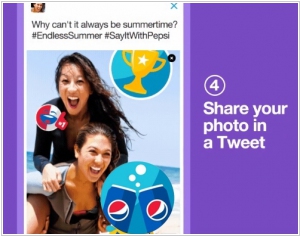
Twitter has introduced its first set of branded stickers, with Pepsi being the initial partner in an undisclosed agreement. This collaboration enables Twitter users to apply stickers created by the popular beverage company onto their photos. When users post these photos with the stickers, a hashtag associated with Pepsi appears within the tweet. This makes the tweet discoverable by Pepsi, potentially leading to further promotions or competitions. Simultaneously, this innovative approach helps promote the brand in a unique manner on Twitter. Brands have the opportunity to design sets of four or eight stickers, resembling accessories or other props, for users to incorporate into their own photos. When users share these photos adorned with the brand's stickers, they are visible to all of the user's followers. This enables brands to be showcased by their fans in an authentic and genuine way, offering a new dimension of exposure on Twitter.
2015. Google Adwords will allow to target customers by email
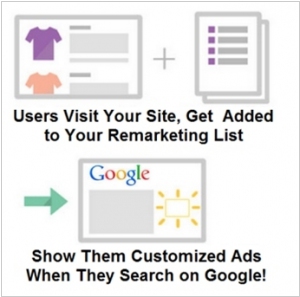
Google Customer Match introduces a fresh approach to connecting with your most valuable customers across Google Search, YouTube, and Gmail. This innovative product enables you to upload a list of email addresses, which are securely and privacy-consciously matched with signed-in Google users. Subsequently, you can create targeted campaigns and advertisements tailored to engage your specific audience. Users retain control over the ads they encounter, including Customer Match ads, by opting out of personalized ads or utilizing the options to mute or block ads from specific advertisers through Google Ads Settings. Additionally, Customer Match offers the opportunity to expand your customer base by showcasing ads to potential customers who share similar interests with your rewards members while they browse YouTube and Gmail.
2015. Twitter launched Mobile Ads Manager
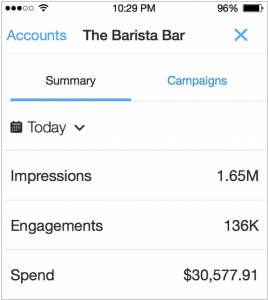
Twitter has officially introduced its new mobile Ads Manager, enabling users of Twitter's smartphone applications to monitor the performance of their ad campaigns while on the move. The Ads Manager provides valuable insights such as impressions, engagements, spend, cost per engagement, and engagement rate. Although the feature is designed for mobile usage, it does not currently support the creation of ad campaigns directly from smartphones. Instead, users are required to initiate their campaigns on the web using a desktop or laptop computer. This approach differs from Facebook's recent release of the dedicated Facebook Ads Manager App, which allows advertisers to both track the performance of existing campaigns and create new ones seamlessly using a mobile device.
2015. Google testing mobile ads with images
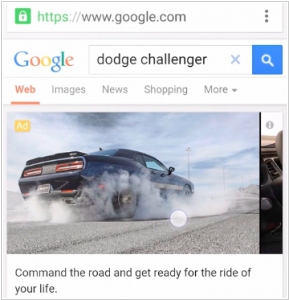
Google is introducing a change to its mobile phone Google Ads by replacing some of the text-only ads with visually enhanced photo versions. These new visual ads, currently available for car-related searches such as the Dodge Challenger, offer users the ability to browse through photos, gather product information, and make reservations directly from the search screen. This represents a significant departure from the text ads that tend to blend in with the overall search results. To cater to car buyers who are closer to making a purchase, Google is also providing franchise auto dealerships with improved location-based ads that include a click-to-call button and directions to their stores. A beta version of these ads is being made available this week. Brands that opt not to pay for the upgraded auto ads will still have the option to stick with the traditional text-only listings. While Google's mobile search results already display click-to-call phone numbers, directions, and occasional images for various business or product searches, these updates will offer companies greater opportunities to customize the user experience of their search results like never before.
2015. Twitter Ads gets Google DoubleClick integration
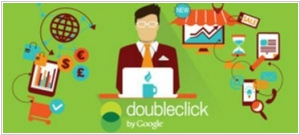
Twitter has announced a collaboration with DoubleClick's bid manager, allowing advertisers to streamline their ad buying process. Through this partnership, ad agencies and buyers can now conveniently purchase ad inventory on various websites, including Twitter Promoted Tweets, from a single interface. By enabling the purchase of Twitter ads through one of the world's most popular tools, Twitter aims to enhance its revenue generation, which is particularly crucial considering the recent missed revenue estimates. Additionally, Twitter aims to strengthen advertiser confidence in the effectiveness of its direct response commerce ads by working closely with DoubleClick to accurately measure the impact of clicks or actions on Twitter that lead to purchases or conversions. This upcoming program, set to launch later this year, will enable advertisers to attribute purchases to Twitter ads across platforms, irrespective of whether the ad views or purchases occurred on the web or mobile devices.
2014. Twitter launches Promoted Video ads
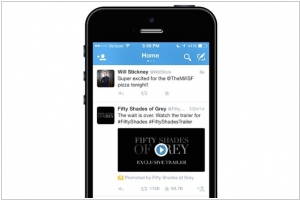
Twitter has commenced beta testing for a new feature called Promoted Video, designed specifically for brands seeking to upload and distribute their videos across the Twitter network. With this feature, advertisers will only incur charges when a user initiates video playback. Promoted Video builds upon the foundation of the Twitter Amplify program, which was previously geared towards prominent media companies such as ESPN, NFL, McDonald's, American Express, BBC, and Viacom, to name a few. Twitter acknowledges the immense popularity of videos on its platform, as evidenced by the positive engagement and increased views observed through the newer Twitter Video Card. In conjunction with the beta launch of Promoted Video, the company is also streamlining the campaign setup process for advertisers by introducing ads based on a Cost Per View (CPV) buying model.
2014. Adwords adds free dynamic sitelinks
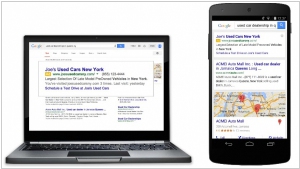
Google Adwords is introducing a worldwide rollout of dynamic sitelinks, which are automatically generated sitelinks displayed beneath your ad text. These dynamic sitelinks aim to enhance user experience by providing easier access to relevant pages on your website. According to Google, the inclusion of sitelinks improves ad relevance and the overall user experience after clicking on the ad. Notably, clicks on dynamic sitelinks are free of charge. However, advertisers will still incur charges for clicks on the ad headline and other ad extensions. Although dynamic sitelinks generally enhance ad performance, advertisers have the flexibility to disable them if desired.
2013. Adwords pulls advertisers to mobile ads
If your company is advertising via Adwords you probably regularly receive notifications to update to the new Enhanced Campaigns (until July 22). What is it and why you need it? The idea is that day by day more and more people use smartphones and more and more ad clicks are coming from smartphones. However, the value of those clicks for your business can be significantly different compared to clicks from desktop (they may be less or more valuable). For example, if you sell SaaS-service, the visitor who clicks on your ad on a smartphone can't immediately try your demo version, so the value of such click will be less. But if you're selling mobile application - these mobile clicks can bring you more buyers. ***




